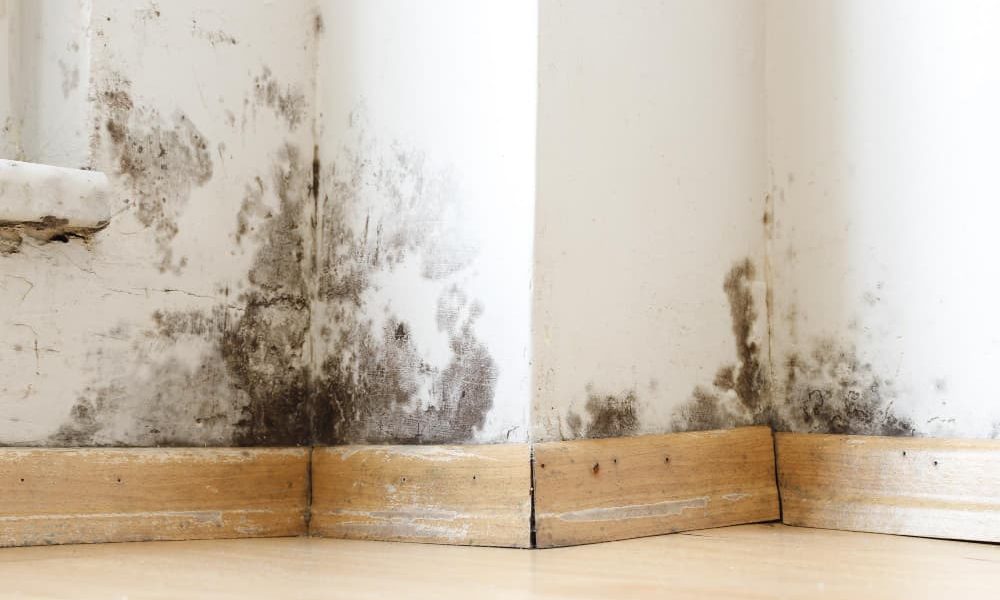There’s something special about giving old, forgotten items a new life. With the growing popularity of sustainable living and DIY home projects, upcycling has become more than a trend—it’s a creative movement that blends environmental responsibility with personal expression. One of the most popular and visually striking ways to upcycle is by transforming old doors into headboards for your bed. Whether you’re after a rustic farmhouse look, a vintage-inspired aesthetic, or something more modern, upcycling an old door is a fantastic project that offers both charm and character to any bedroom.
Upcycling, at its core, is about transforming waste or unused materials into something of higher value. It’s the ultimate act of repurposing, where items that would otherwise be discarded become functional and beautiful again. Unlike recycling, where products are broken down into raw materials to create something new, upcycling keeps the integrity of the item intact, making it a perfect fit for projects like turning an old door into a headboard.
1. Why Upcycle an Old Door into a Headboard?
The idea of using old doors as headboards is not only appealing for their aesthetic qualities but also for their historical and architectural significance. Doors, particularly those found in older homes or antique shops, carry a history that can add depth and character to any space. Every scuff, every crack, and every layer of old paint tells a story, bringing a sense of timelessness to your bedroom décor.
Moreover, this project taps into the broader movement of sustainable living. By repurposing an old door instead of buying a new, mass-produced headboard, you reduce your environmental footprint and contribute to the circular economy. It’s an eco-friendly option that aligns with values of sustainability, making it an excellent choice for those who care about the environment.
Aesthetic Benefits of Using Old Doors
When it comes to home décor, the details are what make a space feel uniquely yours. Doors, especially older ones, often have intricate designs or paneling that give them a distinctive look. Whether your style leans towards rustic, modern farmhouse, shabby chic, or even industrial, there’s likely an old door that can match your vision.
The variety in door designs is vast—some feature intricate carvings, while others boast simple, clean lines. A headboard made from a repurposed door can become a statement piece, effortlessly transforming the vibe of your room. You can choose to preserve the original patina for a vintage feel or give it a fresh coat of paint for a modern update. The possibilities are endless, and the result is always a headboard that’s one-of-a-kind.
Types of Doors Best Suited for Headboards
Not all doors are created equal when it comes to upcycling them into headboards. Solid wood doors are the most commonly used type, primarily because they are sturdy, durable, and provide a broad, flat surface. Panel doors are another excellent choice as they offer unique design elements that can elevate the overall look of your headboard. If you’re lucky enough to find a door with interesting features like glass inserts or ornate moldings, it can add even more personality to your project.
Where do you find these doors? Salvage yards, second-hand stores, and architectural salvage shops are treasure troves for unique, old doors. You can also check out flea markets, garage sales, or even online marketplaces where people sell old building materials. The key is to find a door that matches your bed’s size and suits the design aesthetic you’re aiming for. And remember, imperfections like scratches or chips are all part of the charm—they give the piece character and authenticity.
2. Tools and Materials You’ll Need
Before diving into the project, it’s crucial to gather all the necessary tools and materials. Preparation is key to ensuring a smooth and successful DIY experience, and with the right equipment, you’ll transform that old door into a beautiful headboard in no time.
Essential Tools for the Job
Here’s a checklist of essential tools you’ll need for this project:
- Sandpaper or Power Sander: Sanding is a crucial step in prepping the door, especially if it’s been painted or coated in varnish. Depending on the condition of the door, you may need coarse, medium, and fine-grit sandpaper to smooth it down properly.
- Saw: You might not need this if your door is already the perfect size. But if you need to trim it down to fit your bed, a saw will come in handy.
- Drill and Screws: These are necessary for attaching the headboard to your bed frame or wall. Make sure you have the right screws based on the weight and thickness of your door.
- Paintbrushes: Whether you’re painting or staining the door, having a good set of paintbrushes will ensure a smooth application.
- Measuring Tape: Accurate measurements are key when determining where to place screws and when cutting the door down to size.
- Level: You’ll want your headboard to be straight, and a level will help ensure everything is aligned.
- Mounting Brackets or French Cleats: These will be used to attach the headboard securely to the bed frame or wall, depending on your preferred method.
Required Materials for the Project
Alongside your tools, you’ll need specific materials to ensure the door not only looks great but also lasts for years to come. These materials include:
- Old Door: The star of the project! Ensure the door is the correct width for your bed (twin, full, queen, or king), or be prepared to modify it.
- Wood Stain or Paint: Depending on the finish you desire, you’ll need either wood stain to enhance the natural wood grain or paint to give it a fresh look.
- Wood Filler: If your door has any significant damage, like deep scratches or holes, you’ll need wood filler to repair these imperfections before sanding and painting.
- Sealer or Varnish: To protect the wood and ensure it stands the test of time, applying a sealer or varnish is a must, especially if you opt for a stained finish.
- Mounting Hardware: Depending on how you plan to install the headboard, you’ll need sturdy brackets or French cleats to secure it in place.
Safety Equipment: Don’t Forget Protection!
DIY projects can sometimes lead to unexpected mishaps, so safety is essential. Here are a few pieces of equipment to have on hand:
- Gloves: To protect your hands from splinters, nails, and other sharp objects.
- Dust Mask: Sanding and painting can kick up dust and fumes, so it’s a good idea to wear a mask.
- Safety Glasses: Protect your eyes when cutting wood or using power tools.
By gathering these tools and materials before you start, you’ll set yourself up for success, making the rest of the project smoother and more enjoyable. Whether you’re new to DIY or a seasoned upcycler, the key is to take your time and approach each step with care.
3. Choosing the Right Door
Selecting the right door is the foundation of your headboard project. While the idea of picking an old door might sound simple, there are important factors to consider before diving in. The right choice will depend on your aesthetic preferences, the condition of the door, and the dimensions of your bed.
Factors to Consider When Selecting a Door
When it comes to upcycling, not every old door is a good fit for a headboard. The door you choose should align with the size of your bed, match the design aesthetic you want to create, and be in a condition suitable for refinishing or repurposing.
- Size of the Door: Measure the width of your bed to determine the appropriate size for your headboard. For a standard look, the door should be at least the width of your bed, but many people opt for a door that’s slightly wider for a more dramatic effect. If you can’t find a door that perfectly matches your bed size, don’t worry—many doors can be cut down to fit your specific needs.
- Condition of the Door: Examine the door closely for signs of damage or wear. While some imperfections add charm, extensive damage may require significant repairs. Solid wood doors are preferable because they are sturdy and durable. If you choose a door with paneling, make sure the panels are intact and not too fragile. Hollow-core doors, commonly used in modern homes, are not recommended as they lack the structure and weight needed for a headboard.
- Design of the Door: The style of the door can vary greatly, from simple flat doors to intricately carved ones. Depending on your desired look, you can choose a door that aligns with your design aesthetic. For a rustic or farmhouse look, opt for a weathered door with a distressed finish. For a modern, minimalist style, choose a door with clean lines and a smoother surface.
Where to Source Old Doors
Finding the perfect door is half the fun. There are several places where you can score a great door for your upcycling project:
- Salvage Yards: Architectural salvage yards are gold mines for old building materials, including doors. These places often have a wide variety of options, from antique to vintage, in various conditions.
- Second-hand Stores and Thrift Shops: Many second-hand stores, particularly those specializing in home goods or building materials, carry old doors. Check out places like Habitat for Humanity ReStores or other nonprofit organizations focused on building material reuse.
- Online Marketplaces: Platforms like Craigslist, Facebook Marketplace, and eBay can be great resources for finding old doors. Keep an eye out for local listings to avoid shipping costs.
- Flea Markets and Garage Sales: Sometimes, the best finds are unexpected. Flea markets, estate sales, and even garage sales can offer unique and affordable options.
4. Preparing the Door for Upcycling
Now that you’ve found the perfect door, the next step is preparing it for its new life as a headboard. Proper preparation is key to ensuring a smooth and long-lasting finish, especially if the door has seen years of use or neglect.
Cleaning the Door
Most old doors will have accumulated dirt, dust, and grime over the years, especially if they were stored in basements, garages, or outdoor spaces. Start by giving the door a good clean.
- Remove Dirt and Debris: Use a soft brush or cloth to remove loose dust and dirt. For more stubborn grime, mix warm water with a mild detergent and gently scrub the surface. Be sure to dry the door completely after cleaning to prevent any water damage.
- Remove Old Paint or Varnish: If the door has layers of old paint or varnish, you may need to strip it away to create a clean surface for painting or staining. Use a paint stripper or sandpaper to remove the old finish. Be cautious if the door was painted before 1978, as it could contain lead paint. In such cases, it’s best to consult a professional or use lead-safe removal methods.
Removing Hardware
Unless you plan to incorporate the old hardware into your design, you’ll need to remove any door handles, locks, or hinges. Use a screwdriver or power drill to carefully detach these pieces. If you want to keep the hardware for a future project, clean and store it in a safe place. Any holes left by the hardware can be filled with wood filler before sanding.
Repairing Any Damage
Once the door is clean and hardware-free, it’s time to address any damage. Minor imperfections like scratches or small holes can add character, but significant damage should be repaired.
- Wood Filler: Use wood filler to patch any deep scratches, dents, or holes left by old hardware. Apply the filler with a putty knife, let it dry according to the manufacturer’s instructions, and then sand it smooth.
- Fixing Structural Issues: If the door has more serious structural issues, such as cracks or loose panels, it’s important to repair these before moving forward. Wood glue or small brackets can help reinforce weak areas.
5. Sanding and Prepping the Door
Sanding is a crucial step in preparing the door for its transformation into a headboard. Whether you’re planning to paint or stain the door, a smooth surface is essential for a professional finish.
Sanding Techniques for a Smooth Finish
Start with a coarse-grit sandpaper (around 80-grit) to remove any remaining paint, varnish, or imperfections. Work your way up to finer grits (120-grit, 220-grit) to smooth the surface. If the door has detailed carvings or paneling, you may need to use a sanding block or sand by hand to get into the intricate areas. For large, flat surfaces, a power sander can save time and effort.
- Dealing with Paint from Previous Finishes: If the door has multiple layers of old paint, particularly if it’s peeling or chipping, sanding will help to remove it. However, if you’re aiming for a distressed, vintage look, you may choose to leave some of the old paint intact for a more weathered appearance.
- Sanding the Edges: Don’t forget to sand the edges of the door. This ensures a uniform look and smooth finish all around. If the edges are rough or splintered, pay extra attention to them during the sanding process.
Prepping the Door for Paint or Stain
Once the door is sanded smooth, wipe it down with a damp cloth to remove any dust or residue. This will help ensure that the paint or stain adheres properly. Depending on the look you’re going for, you can apply a primer (for paint) or a pre-stain wood conditioner (for stain) to achieve a more even finish.
- Primer for Painting: If you plan to paint the door, applying a primer first is highly recommended. Primer helps the paint adhere better, reduces the number of coats you’ll need, and ensures a more durable finish.
- Pre-Stain Conditioner: For a stained look, a pre-stain wood conditioner helps to prevent blotches or uneven staining, particularly on softwoods like pine or oak.
Once your door is prepped, sanded, and ready to go, you’re all set for the next step: painting or staining! This is where your creativity will truly come to life.
6. Painting or Staining the Door
Now that your door is sanded and prepped, it’s time to bring your vision to life through painting or staining. This stage is where you’ll have the most creative control, and the finish you choose will dramatically impact the final look of your headboard. Whether you opt for a rustic, shabby-chic paint job or a sleek, stained wood finish, this step is all about giving the door its new personality.
Choosing Between Paint and Stain
When deciding whether to paint or stain your door, consider the overall style of your bedroom and the look you’re aiming to achieve:
- Painting: If you want a more colorful or modern look, painting is a great option. It allows you to completely transform the door’s appearance. You can choose a bold color for a statement piece or stick with a neutral palette for a classic, timeless vibe. Chalk paint is popular for those who prefer a distressed, vintage look, as it’s easy to sand back and give the door an aged appearance.
- Staining: If you prefer a natural, woodsy look, staining highlights the natural grain and texture of the wood. Stain works best on solid wood doors, especially those with attractive grain patterns. Different stains, from light oak to dark walnut, can create a wide range of finishes, from light and airy to rich and dramatic. If you love the original texture of the door and want to maintain a more natural finish, stain is the best choice.
Applying the Paint or Stain
Here’s how to apply paint or stain for the best results:
- Painting: Start with a primer to ensure your paint adheres evenly. Once the primer has dried, apply your paint in smooth, even strokes using a brush or roller. Allow each coat to dry fully before applying the next one, and sand lightly between coats for a smoother finish. Two to three coats are usually sufficient for full coverage. For a distressed look, lightly sand the edges and raised surfaces once the paint has dried, revealing some of the underlying wood.
- Staining: If you’re staining the door, use a brush or a clean cloth to apply the stain in the direction of the wood grain. Work in sections to ensure an even application, and wipe away any excess stain with a clean rag. Allow the stain to dry, and then apply a second coat if you want a deeper, richer color. Once the stain is fully dry, finish the door with a clear sealer or varnish to protect the wood and enhance the stain’s color.
Tips for Creating Different Looks
- Distressed/Shabby-Chic: To achieve a distressed or shabby-chic look, start with a base coat of paint and then use sandpaper to selectively remove paint in areas that would naturally show wear over time—such as edges and corners. Adding a layer of dark wax or glaze over the paint can also enhance the aged effect.
- Sleek and Modern: For a clean, contemporary look, choose a high-gloss paint or a deep stain with a clear satin finish. Be sure to sand between coats for a smooth, flawless surface.
7. Adding Decorative Touches (Optional)
Once your door is painted or stained, it’s time to think about decorative enhancements that can elevate your headboard to a new level. While the beauty of an old door lies in its simplicity, adding a few creative touches can make it truly unique.
Adding Molding or Trim
Molding or trim can add a touch of elegance to your headboard. It’s a particularly good option if you want to give your door a more polished, architectural look. You can find decorative moldings at most hardware stores, and they’re easy to cut and attach using wood glue or small nails.
- How to Install: Measure and cut the molding to fit around the edges of the door or along any panels. Attach it securely with wood glue or nails. If you’re painting the door, you can paint the molding the same color for a cohesive look or use a contrasting color to make it stand out.
Incorporating Stenciling, Decals, or Upholstery
For a more personalized touch, you can incorporate stencils, decals, or even upholstery into your design:
- Stenciling: Using a stencil allows you to add intricate designs, such as florals, geometric patterns, or even a favorite quote. Apply the stencil to the door with a sponge or brush, using light dabs of paint. This works particularly well on painted surfaces but can also be used on stained doors for a unique look.
- Decals: Vinyl decals offer a simple way to add interest without the commitment of paint. These peel-and-stick designs come in a variety of styles and are easy to apply and remove if you decide to change things up later.
- Upholstery: Adding a padded section to your headboard can introduce both comfort and texture. You can easily upholster part of the door by attaching foam padding and fabric to one or more of the panels using a staple gun. This is a great way to create a soft, luxurious feel while maintaining the structural beauty of the door.
Creating a Distressed or Shabby-Chic Look
If you haven’t already distressed the door during the painting process, you can do so now. Use fine-grit sandpaper to gently sand the edges, corners, and raised surfaces of the door, revealing the wood or base coat of paint underneath. This technique works especially well on doors with intricate carvings or paneling, as it adds a sense of age and history to the piece.
8. Mounting the Headboard
Now that your headboard is complete, it’s time to mount it to your bed or wall. There are two primary methods for attaching the headboard: mounting it directly to the bed frame or securing it to the wall. Each method has its pros and cons, so choose the one that works best for your space.
Attaching the Headboard to the Bed Frame
Many bed frames come with brackets or slots designed for attaching a headboard. If this is the case for your bed, attaching the door as a headboard is relatively simple.
- How to Attach: First, position the door behind the bed, ensuring that it’s centered and aligned with the frame. Using a drill, attach brackets or mounting hardware to the back of the door and the frame. Make sure the screws are securely fastened so the headboard is stable. If your bed frame doesn’t have pre-existing brackets, you can purchase universal headboard brackets at most hardware stores.
Mounting the Headboard to the Wall
If your bed frame doesn’t support headboard attachments, or if you prefer a floating headboard look, mounting the door directly to the wall is an excellent option. This method gives you more flexibility in terms of height and positioning.
- French Cleats: One of the most secure ways to mount a headboard to the wall is by using French cleats. These are two interlocking pieces of wood or metal that hold the headboard securely in place. One piece attaches to the wall, and the other attaches to the door. Once the cleats are installed, you simply hang the door on the wall.
- How to Install: First, measure and mark where you want the headboard to sit on the wall. Install one half of the French cleat on the back of the door and the other half on the wall, ensuring they are level. Then, lift the door and hang it on the cleat. French cleats can support substantial weight, making them perfect for heavy, solid wood doors.
Securing the Headboard for Stability
No matter how you choose to mount your headboard, make sure it’s stable and secure. If mounting to the wall, use wall anchors or screws that are appropriate for the weight of the door and the type of wall material (drywall, plaster, etc.). If attaching to the bed frame, ensure the brackets are tight and won’t loosen over time.
By following these steps, you’ll ensure your headboard is both beautiful and functional, providing the perfect finishing touch to your DIY project!
9. Finishing Touches and Maintenance
Once your headboard is securely mounted, it’s time to step back and admire your work—but before you call it finished, there are a few final steps to ensure your new headboard remains durable and beautiful for years to come.
Sealing the Finish for Long-Term Durability
Regardless of whether you painted or stained your headboard, applying a clear protective finish will help preserve your hard work. This final layer acts as a shield against moisture, dust, and general wear and tear, ensuring that your headboard stays in top shape.
- For Painted Surfaces: Use a water-based polyurethane or polycrylic finish to protect the paint without yellowing over time. Apply two to three thin coats, allowing each coat to dry completely before applying the next. Sand lightly between coats with fine-grit sandpaper for an extra-smooth finish.
- For Stained Wood: A clear varnish or polyurethane will help bring out the richness of the wood grain while adding a protective layer. Choose a satin or gloss finish depending on the level of sheen you prefer. Apply in thin, even coats, and be sure to sand between layers for the smoothest result.
Cleaning and Maintaining the Headboard Over Time
Your upcycled door headboard is a unique piece of furniture, and while it may be built to last, proper care will ensure it retains its charm over time. Here’s how to maintain it:
- Dusting: Regularly dust the headboard with a soft cloth or microfiber duster to prevent dust buildup. This is especially important if your headboard has intricate carvings or paneling where dust can easily settle.
- Spot Cleaning: For any minor stains or marks, use a damp cloth and mild soap to gently clean the surface. Avoid using harsh chemicals, especially on painted or stained surfaces, as they can damage the finish.
- Avoid Moisture: Wood, especially reclaimed or vintage wood, is sensitive to humidity and moisture. If your headboard is mounted in a humid environment, consider using a dehumidifier to protect the wood. Avoid placing it in direct sunlight, which can cause fading or warping over time.
By following these maintenance steps, you’ll ensure that your headboard remains as striking as the day you finished it, adding warmth and character to your bedroom for years to come.
Conclusion
Congratulations! By transforming an old door into a headboard, you’ve created not only a functional piece of furniture but also a work of art that tells a story. Every step of this upcycling process—from choosing the right door to adding your creative finishes—has allowed you to craft something entirely unique while giving new life to materials that might have otherwise been discarded.
This project doesn’t just add a beautiful touch to your bedroom; it’s also a reflection of the growing movement towards sustainability and conscious living. Upcycling is all about reducing waste, repurposing old items, and creating something new that’s both practical and aesthetically pleasing. You’ve taken a piece of history and made it your own, contributing to a more environmentally friendly home in the process.
Now that you’ve mastered the art of upcycling doors into headboards, who knows what your next project might be? Whether it’s transforming other household items or diving deeper into DIY furniture-making, you’re well on your way to becoming an upcycling expert. And in the end, the satisfaction of creating something with your own hands will always be a reward in itself.
With your new upcycled door headboard proudly displayed in your bedroom, you’ve not only completed a DIY project—you’ve crafted a story, a piece of art, and a step toward a more sustainable lifestyle.







